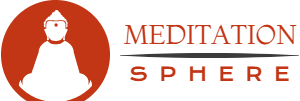Meditation for workers
What we know from neuroscientists is that meditation improves attention, reduces our stress hormones, and increases wellbeing, appreciation, and compassion for others. Meditation allows people to be kind, collaborative, and present at the moment. So of course, if you had workers in your organization that we’re able to tap into this you would have a much more productive workplace!
The below article addresses this and looks at one organization that is teaching meditation techniques to organizations as part of their personal and professional development. Not only is it producing better workers, but this happiness is spilling into their personal lives, so they now have people who are happier at work and at home. It is a win-win for everyone.
Happy workers
In 1972, I was a 30-year-old American traveling in India, with the smell of incense in my hair and mantras repeating in my ears. Back then, if you had told me that I would someday be training employees of corporate America to apply contemplative prac-tices to help them become more successful, I would have said you’d been standing too long in India’s hot noonday sun.
Yet not long ago, I was standing in front of employees at Google in Mountain View, Calif. They were dutifully following my instructions to feel the sensations of their breath as it passed in and out of their nostrils, and learning how to send e-mail mindfully, by taking three deep breaths before hitting “send.”
I am a co-founder of the Center for Contemplative Mind in Society, a nonprofit organization that is now 16 years old, and we have undertaken a daunting task: to convince people in their workplaces that the simple meditation techniques developed 2,500 years ago by the Buddha might help increase productivity, reduce absenteeism and inspire greater creativ-ity. We have introduced contemplative exercises that can reduce stress and heart rate and increase attention and awareness of self and others. We teach what we call “mindful lis-tening,” so that a speaker is fully heard.
For our first project, we chose a large corporation in the Midwest whose C.E.O. knew one of our board members. We created a three-day, mostly silent retreat off site.
I encountered workers who were exhausted, overworked and stressed. They were curious whether these practices could help, but also skeptical. Before the retreat, several people said, in effect: “Stress got me where I am. I don’t want to lose my edge.”
I thought to myself: This won’t be easy; maybe they won’t even attend.
But they all showed up. First, I asked them to lie on the floor for a deep-relaxation exer-cise. They didn’t balk; instead, they followed my instructions to let go and relax their bod-ies. We also introduced mindfulness meditation, which we believe builds attention and in-sight and helps people become more kind and loving. We taught the practice of bringing our minds to our breath, noticing our breath, and returning to our breath each time the mind wanders off — a task that’s tougher than it sounds.
“This is the hardest thing I’ve ever done,” said the C.E.O., who had a brilliant mind and thousands of employees. But the participants learned how to bring their minds to a place that was calm and clear, a great place to begin thinking and making decisions. When it was over, all felt that it was helpful.
SINCE that first foray into the corporate world, we have worked with many other organiza-tions. For a small group, we have had a big reach, working with high-profile organizations like Yale Law School, Hearst Publications and the Army. We’ve offered programs as di-verse as one-hour introductions, four-day intensive retreats, and courses with six weekly sessions.
At first, resistance was everywhere, but so were the possibilities. A litigation lawyer thought that if he became more compassionate toward the opposition in his cases, he couldn’t be a zealous advocate for clients. But he found that being calm, clear and com-passionate gave him better insights and better timing.
An environmental leader thought that if others knew he practiced meditation, they wouldn’t take him seriously — and would write him off as a tree-hugger without scientific rigor. In-stead, he found that he became more resilient, and less overwhelmed by climate-change predictions, and that he collaborated better with colleagues.
It turns out that people work better when they are happy and feel aligned with their work. I know I do.
Article Source: New York Times
